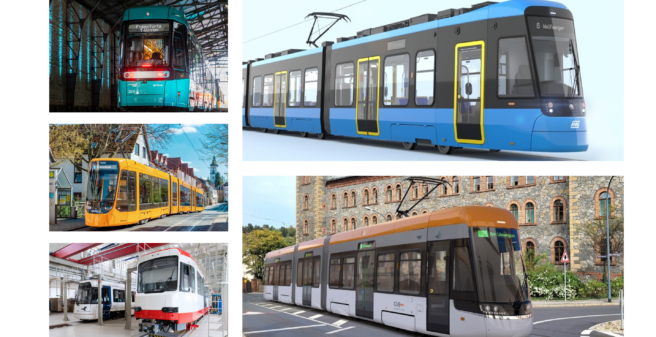
The current overview as of 1 March 2024
In the first quarter of 2024, the two authors once again present this compilation. It dates back to 1993 and is now the 24th list of its kind.
This represents a total of 74 orders. The market shares for all trams and light rail vehicles ordered and currently being delivered (excluding metros and tram-trains) show that Stadler was able to take over the market leadership from Alstom (including the former Bombardier Transportation) thanks to the order for the 246 VDV tram-trains. Siemens follows in third place with 15.4 %, closely followed by Skoda with 12.9 % market share. It is followed by CAF with 10.1 %, Heiterblick/ Kiepe with 6.3 % and Modertrans with 0.3 %. Due to the low number of vehicles ordered, market shares have shifted somewhat in the orders for the 2023 – 2024 period. Škoda Transporation in particular was able to increase its market share for this period to just under 30% thanks to the Kassel order and important option cancellations in the RNV region and Brandenburg.
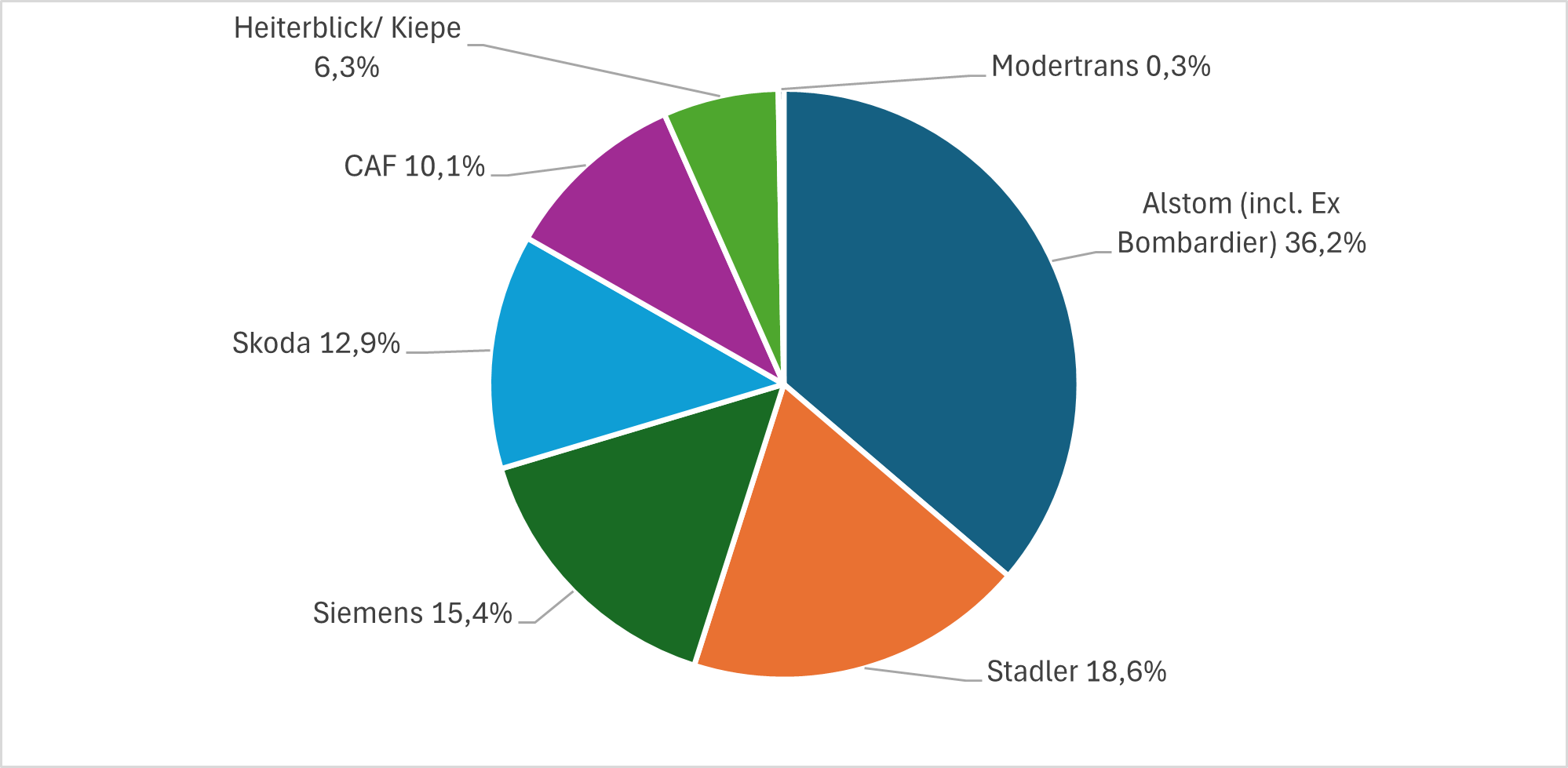
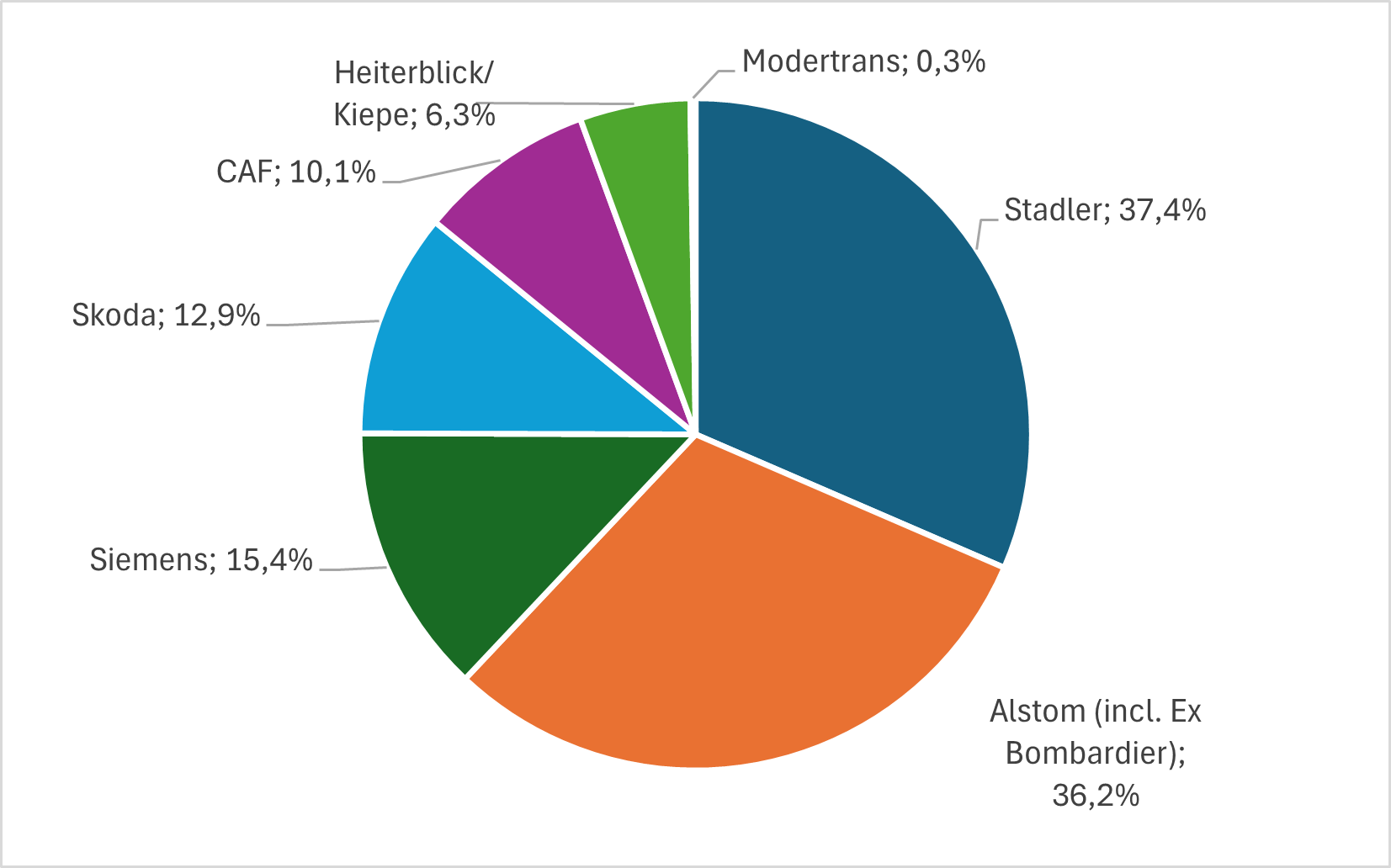
Not only is the period between tender and deployment getting longer and longer, as explained in the preliminary remarks last year, but manufacturers have recently been having great difficulty meeting the planned delivery times, even with generous scheduling. In some cases, this is not just a matter of a few months, but several years. The effects of the coronavirus pandemic have not yet been fully eliminated, the war between Russia and Ukraine has created new obstacles in the international economy, increasing shortages of certain raw materials and upheavals in the labour market are also disrupting supply chains in the wagon manufacturing industry due to a lack of certain parts. In some cases, extreme cost increases for certain components are cancelling out old calculations, savings are difficult and are most likely to affect personnel. This is then missing in production.
Customers are also affected by the severe delivery delays with regard to existing vehicles. The plan to replace these with the new deliveries in such a way that costly reconditioning to extend the service life or additional main inspections can be omitted is of course a waste of time if the new vehicles take too long to arrive. In the meantime, the workforce in our own workshops is mostly “sewn to the edge” and there is a lack of capacity for such unplanned work. Contracts have to be awarded to the industry, but they usually meet with little interest. The necessary measures to prolong the life of older vehicles tend to be carried out at short notice, but the capacity utilisation of the factories and workshops hardly allows for this. In addition, spare parts are often no longer available for certain components of the electrical and mechanical equipment, and producing new ones is not only time-consuming but also expensive.
In any case, the delay will also be expensive for the manufacturers, as the contract awards include penalties for late deliveries. In some cases, additional vehicles have already been offered in lieu of the penalties.
The expectation that the market is slowly approaching saturation was already expressed in the preliminary remarks for 2023. However, the fact that the slump has occurred so quickly is surprising. Of the seven current or planned tenders mentioned in Section II of the 2023 list, two (Gera and Kassel) have been converted into orders, while at the same time further trams were put out to tender in Kassel. The tender for new underground vehicles in Hamburg has not yet led to the award of a contract, and the tender for new high-floor vehicles in Cologne has not produced any bids, so it has been withdrawn in its planned form. The 2023 delivery date is likely to be illusory in any case, but both companies require new vehicles due to additional demand for service expansions and the replacement of older vehicles.
Current orders and deliveries in detail:
Augsburg
Around 20 months late, the first 7-part 100% low-floor Tramlink car arrived from Stadler’s Valencia plant on 3 August 2023. The second car did not follow until 12.12.2023. A total of 15 units have been ordered, with 4 units from an option of 16 vehicles having been converted into firm order. We reported here. The GT6M fleet has been sold to Zagreb (Croatia). Check out more details here:
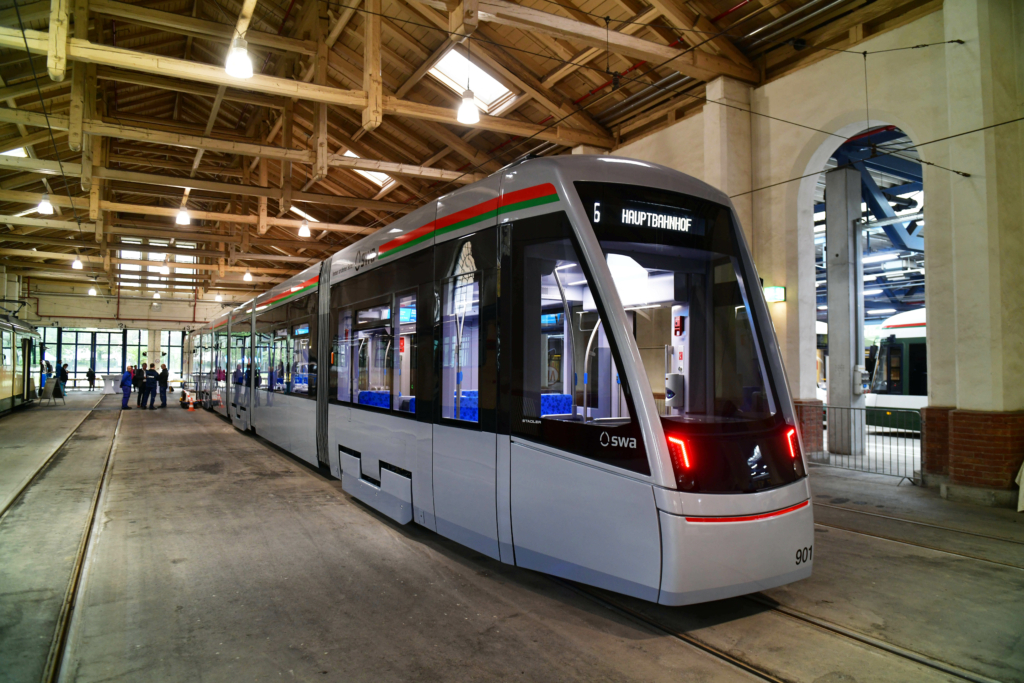
Berlin
At the end of 2022, the last of 21 seven-car GT8 ZRL 100% low-floor Flexity 2 vehicles ordered was delivered on schedule. This was supposed to be immediately followed by the ordered Flexity Berlin 2, of which three five-car pre-delivery coaches and then 17 seven-car coaches, both also as two-unit vehicles, were to be delivered. With a delay of more than a year, these will now not arrive until 2024. A framework agreement also provides for the delivery of 97 additional vehicles by 2033, the length of which will be determined in the near future.
Bielefeld
The last vehicles of the second series of the so-called Vamos GT8Z light rail vehicles were delivered to the city on the Teutoburg Forest in May 2023. The second series comprised a total of 24 vehicles, which are almost identical in design to the first series from 2011 – 2013, which comprised 16 vehicles. As a result, the classic M8Cs from the 1980s were taken out of service at the end of May and most of them scrapped. A rail grinding car from Windhoff has been ordered for delivery in 2024.
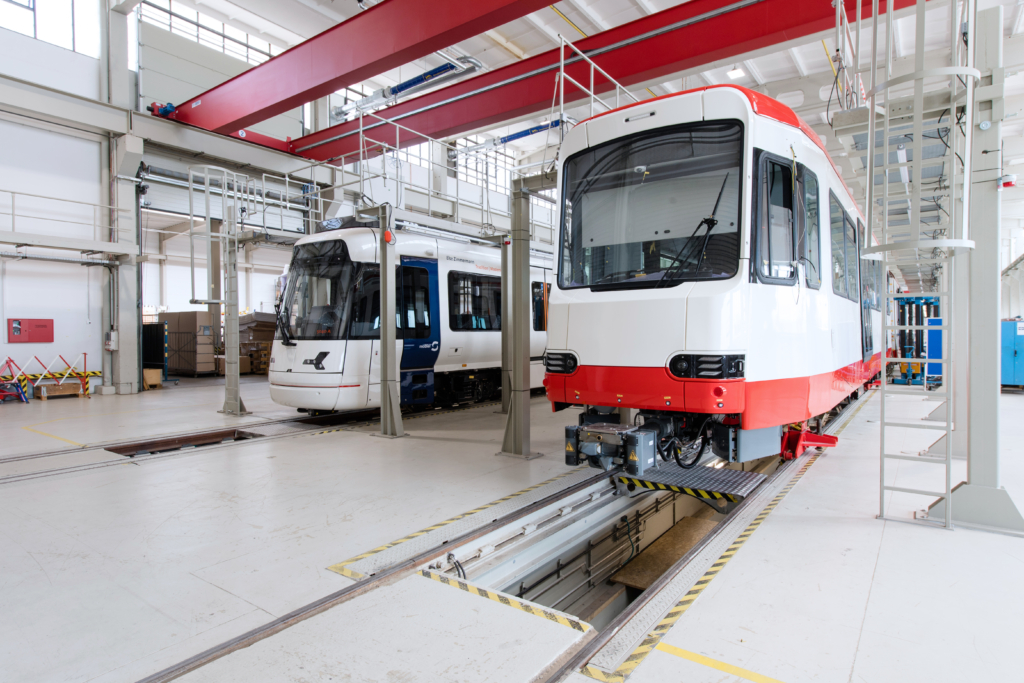
Bonn
In May 2017, the Bonn City Council passed an initial draft resolution on the procurement of new low-floor vehicles. In July, the purchase of 26 vehicles (originally only 24 were budgeted) was approved. The tender was published in July 2018 and the number of options increased from nine to twelve. It was not until late autumn 2019 that the contract was awarded to the Czech manufacturer Skoda Transportation for a 70% three-part bi-directional vehicle with the type designation ForCity Smart 41T. The plan was to deliver the first carriage in mid-2022 and then the other trams every 14 days until August 2023. This plan was overtaken by reality, as the first newcomer only arrived in Bonn on 1 February 2023. It had previously completed extensive test runs on the Pilsen tram network. Although it was therefore actually ready for use, it did not get beyond night-time test runs for a year. We reported here.
It was not until 11 October 2023 that a second car arrived in Bonn. It too has only been on test runs so far. It is currently just as unclear when the service will begin as when the other 26 new vehicles (2 from an additional order in 12-2022) will reach Bonn in their entirety. The condition of the first generation of low-floor trams procured in 1994 continues to deteriorate after 30 years in service. There are repeated breakdowns due to a lack of spare parts; most recently, the fleet had to be taken out of service completely during the onset of winter in January 2024 and a replacement service with buses was set up on the affected lines.

In the meantime it has been reported that the R.1.1 first-generation low-floor trams might be sold to the public transport authority in Poznan (Poland). We reported here. However, the purchase has not been confirmed yet officially.
Light rail vehicles for the high-floor network have also been ordered from CAF (22 units, including two advance trams. An option for ten units has been exercised in 12-2022).
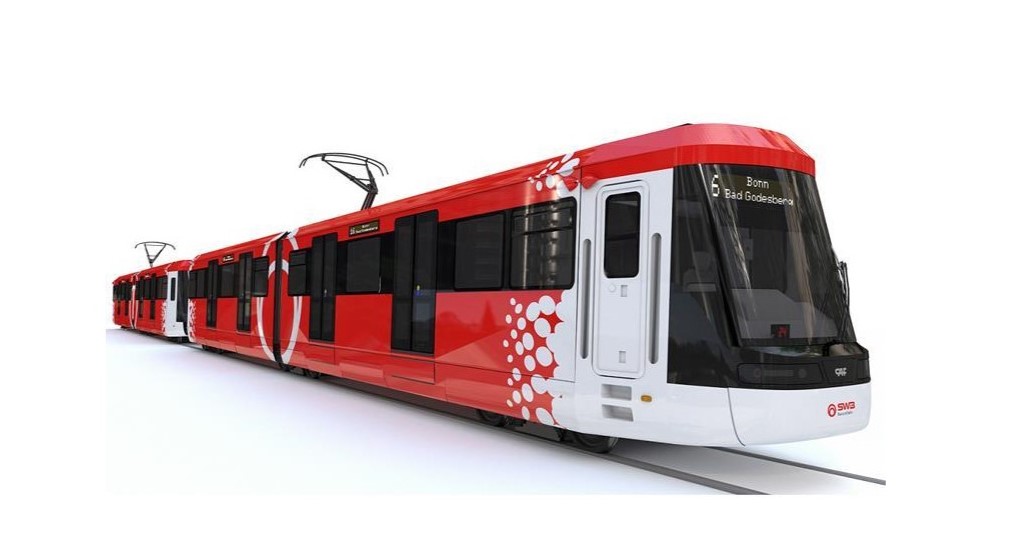
State of Brandenburg (Brandenburg, Cottbus, Frankfurt/Oder)
After the state promised to provide subsidies for the procurement of new vehicles in December 2017, the three aforementioned companies, for the first time in Germany, issued a joint tender for an order in 2018. In total, only 24 vehicles plus 21 options were involved, which was still a number that made it difficult to obtain favourable conditions from the industry. However, an unsuccessful competitor filed a lawsuit against the award to Skoda Transportation, which led to a legal dispute that lasted a good two years and only resulted in a final confirmation of the award decision at the beginning of June 2020, which was therefore valid and could now be implemented. While the tender originally envisaged delivery by 2022, this has delayed delivery to 2024 and 2025. The first vehicle is due to be delivered to Frankfurt/Oder in April 2024, followed by Cottbus a month later. In December 2022, Cottbus not only honoured its option for 13 vehicles, but also ordered two more. There are structural differences between the three-part ForCity Plus single-unit coaches of the three companies with a 70% low-floor share. For example, the carriages for Brandenburg and Frankfurt (Oder) have a width of 2.30 metres, whereas in Cottbus they are 2.40 metres wide. We reported here.
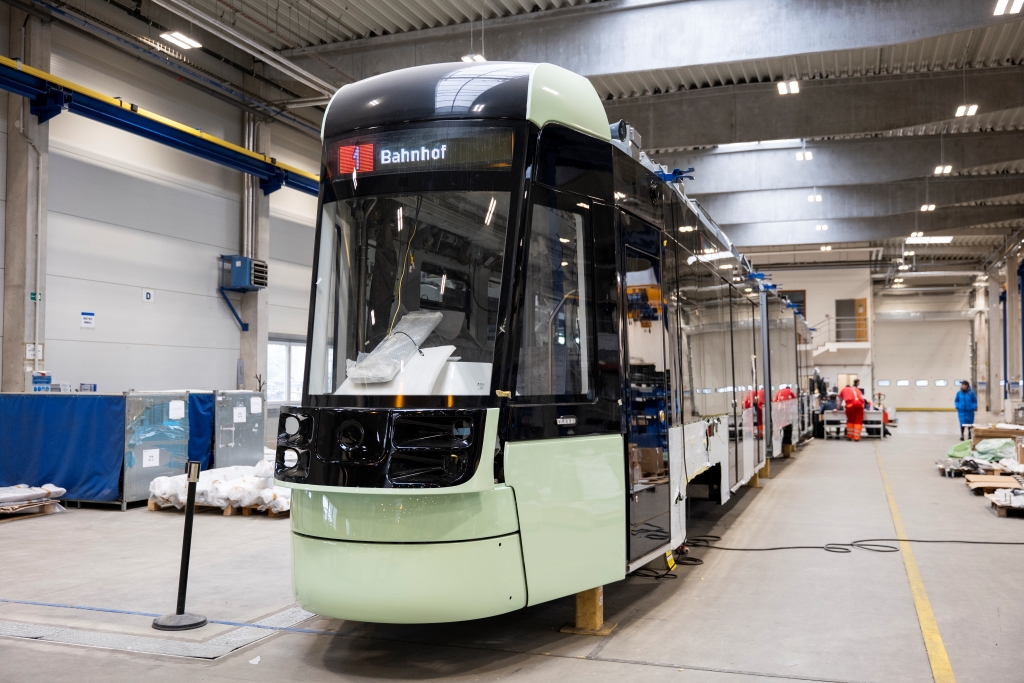
Bremen
The delivery of a total of 77 four-part 100% low-floor four-part Avenio furnishing carriages from the manufacturer Siemens, which began in 2020, was completed at the beginning of 2024. 35 units are EBO-compliant for use on future external lines at railway level. There are still seven options for this variant.
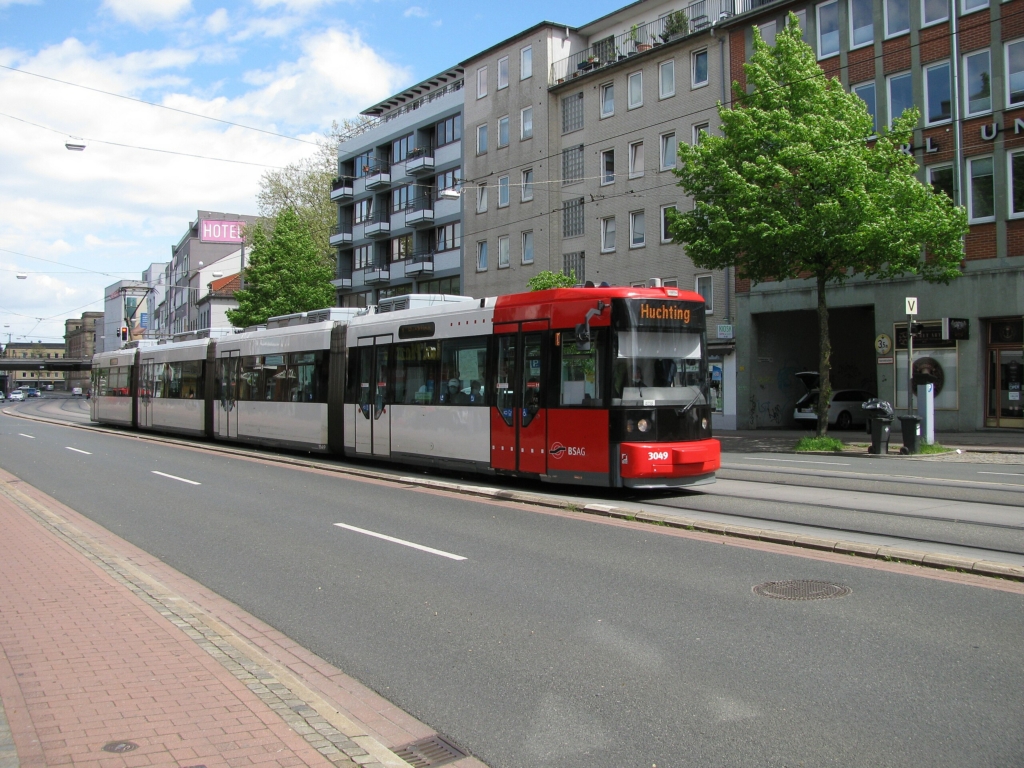
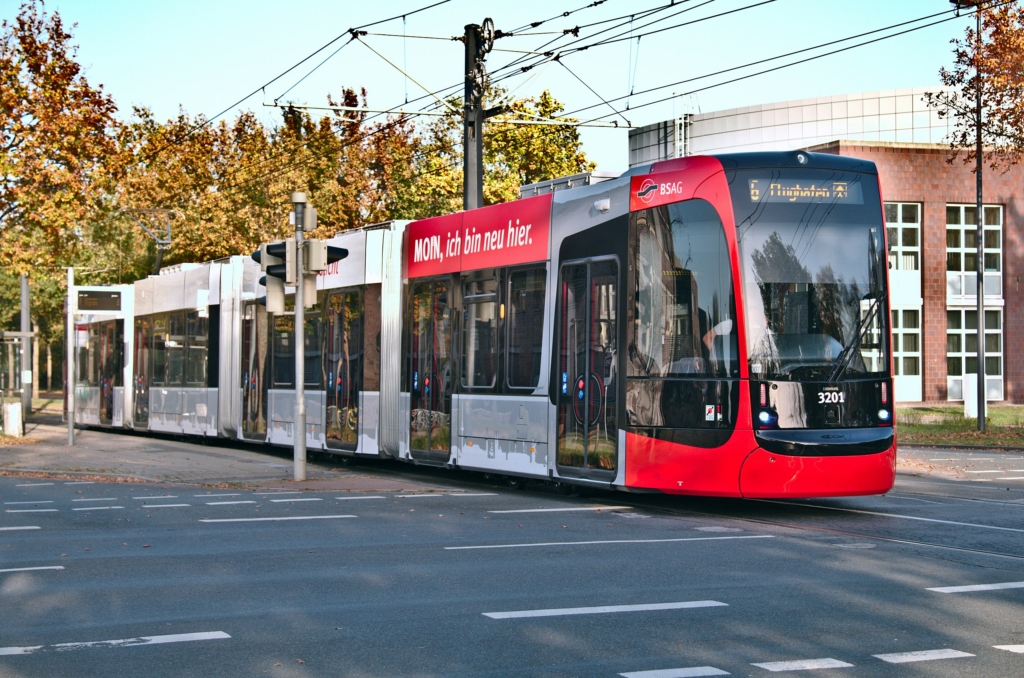
Darmstadt
The order for the 14 100% low-floor trams for single-unit operation tendered in January 2019 plus options for 30 units was awarded to Stadler in the same month of the following year. Contrary to what was actually required in the tender, the five-car units have a new underframe design, from which the type name TINA (Totally Integrated Low-floor Drive) is derived. The delivery deadlines were largely met here and the first car reached Darmstadt in mid-December 2022. The first option had already been exercised in September 2022 and increased from ten to eleven units. Their delivery immediately followed the last two of the first series in November 2023, with a total of 16 units available at the end of the year.
However, the new design is making itself felt in the hesitant approval and use in passenger transport. Trial runs were carried out with only a few vehicles and it was only from October 2023, and from mid-December into January 2024, that they were not used in regular services, but were used for driver training. The tight situation in the fleet meant that a six-axle vehicle from the fleet of historic vehicles had to help out. We reported here.
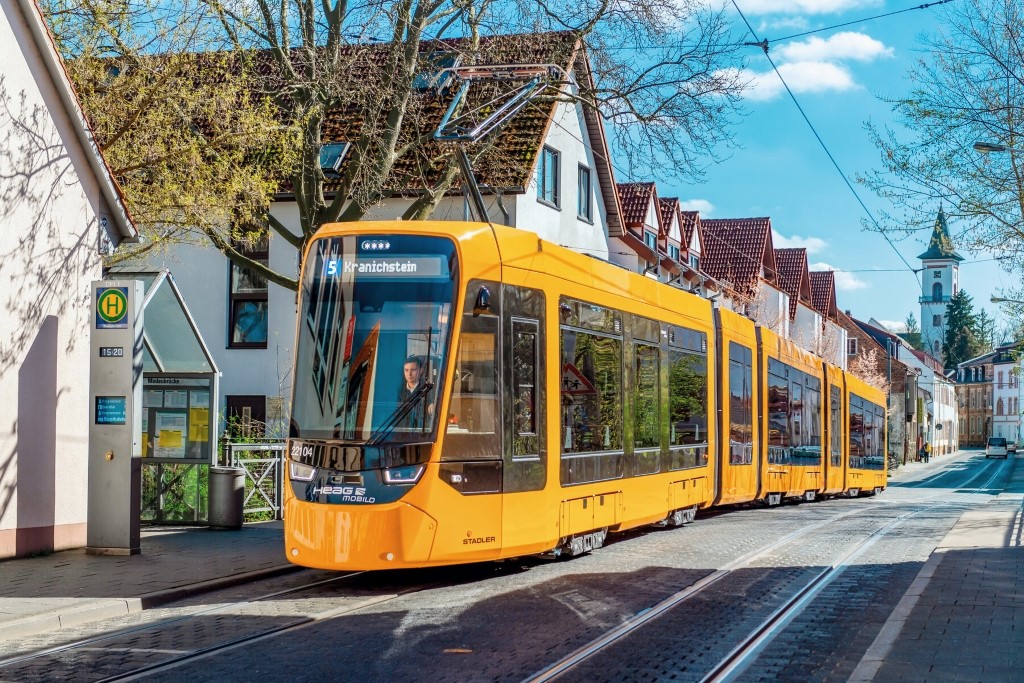
Dortmund
Plans to renew the fleet of high-floor light rail vehicles date back to 2016. The tender was issued in 2017, and it was not until late spring 2018 that the contract for 24 two-car Vamos light rail vehicles was awarded to the Leipzig-based company HeiterBlick. Delivery was scheduled to begin in 2021. The first new six-axle vehicle actually arrived at its future destination at the beginning of December 2022. The option for two more units was exercised at the beginning of 2024 and a further eight units were ordered without a tender. After thorough testing of the first vehicle, delivery continued from March 2023 and eight “Vamos Dortmund” coaches were available by the end of 2023. At the end of February 2024, it was not yet possible to predict when they would be approved for passenger service.
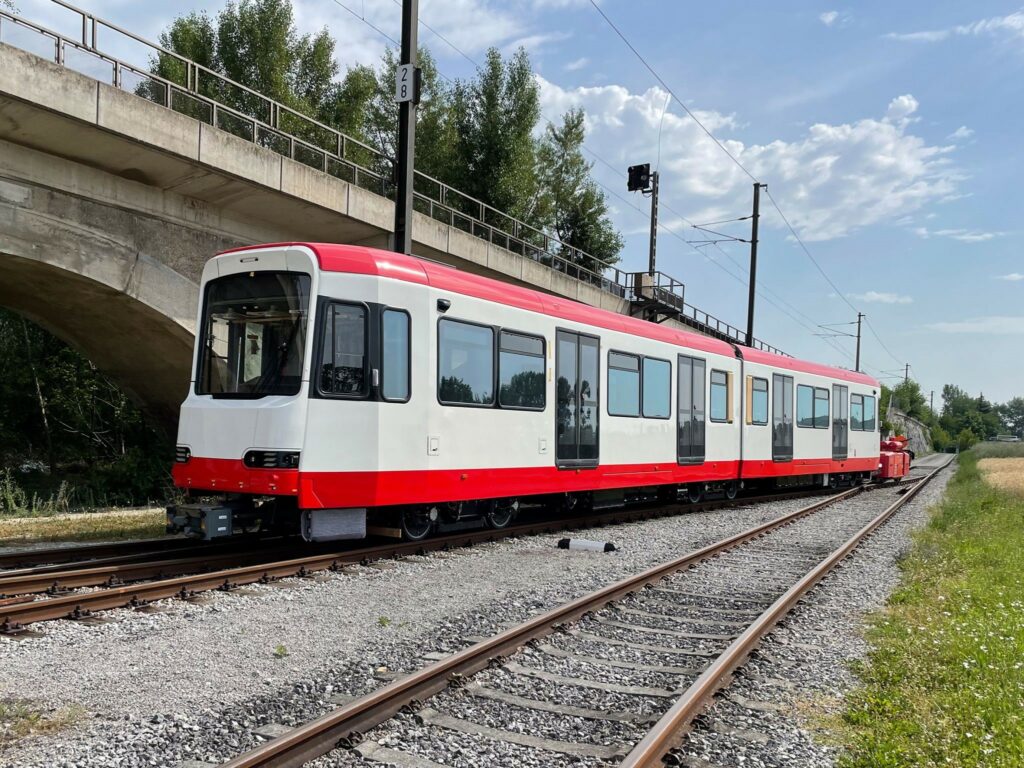
Dresden
All 30 NGT_X_DD vehicles, ordered in August 2019 for delivery from the end of 2021 to 2023, were delivered on time by the manufacturer Alstom, Bautzen plant (formerly Bombardier). Pressure was created by the subsidy regulation of the state of Saxony, which is only paid in full if all the vehicles ordered are not only delivered by the end of 2023, but are also available for passenger use. The fleet consists of 21 single- and 9 double-deckers, with a low-floor share of 70%. In April 2022, three of the ten options were redeemed as furnishing cars, which are to be delivered in 2024. In the meantime, the transport operator launched another market enquiry for further new vehicles, although an option for the same number of units was still available.
We reported here.
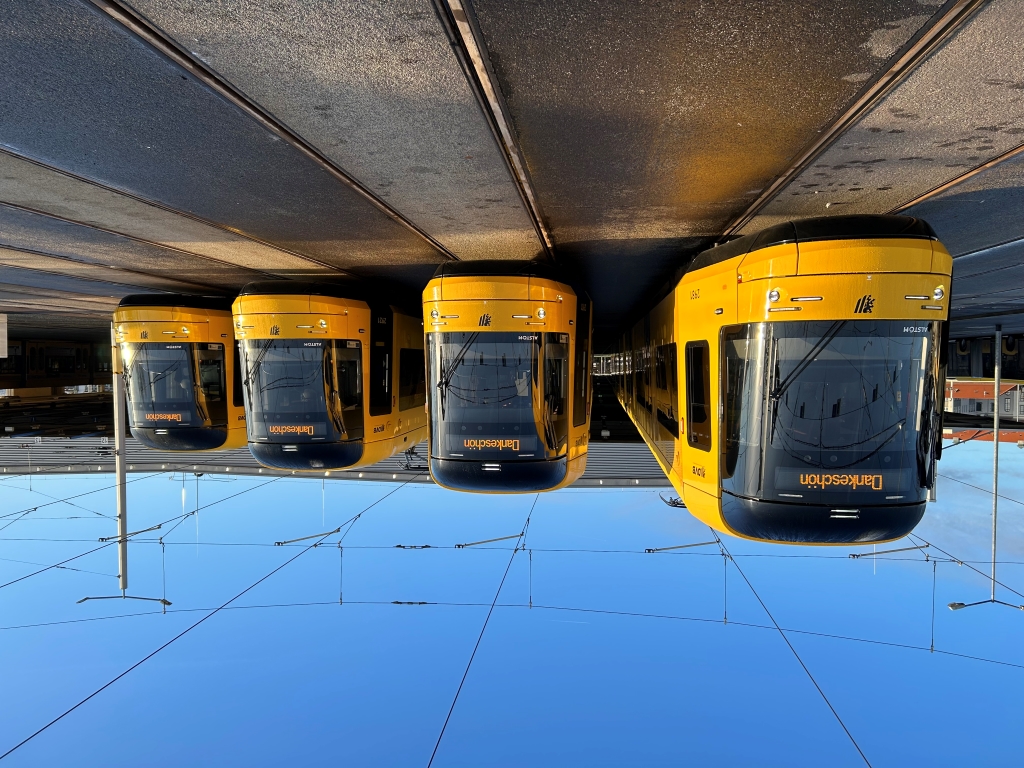
Düsseldorf
Rheinbahn is having no luck with the punctual delivery of ordered high-floor vehicles. While this has already affected the Bombardier/Alstom HF6 type currently being delivered, it now also applies to the Avenio HF B-car successor ordered jointly with Duisburg from Siemens. The same should apply to the ordered share of 91 Avenio HF as for Duisburg with regard to the time delay
The delivery of a total of 59 HF6s from the joint order with Cologne is still running slowly and in some cases with longer pauses. In the fifth year after the first carriages appeared on Düsseldorf’s tracks, almost exactly half are on site and ready for operation. However, Alstom, the successor to the original contractor Bombardier, has promised to deliver the rest by the end of 2024. The timetable improvements originally planned for autumn 2023 had to be postponed to the beginning of January 2024, and the remaining GT8SU (whose basic substance is 50 years old!), which are actually to be replaced by the HF6, are still required.
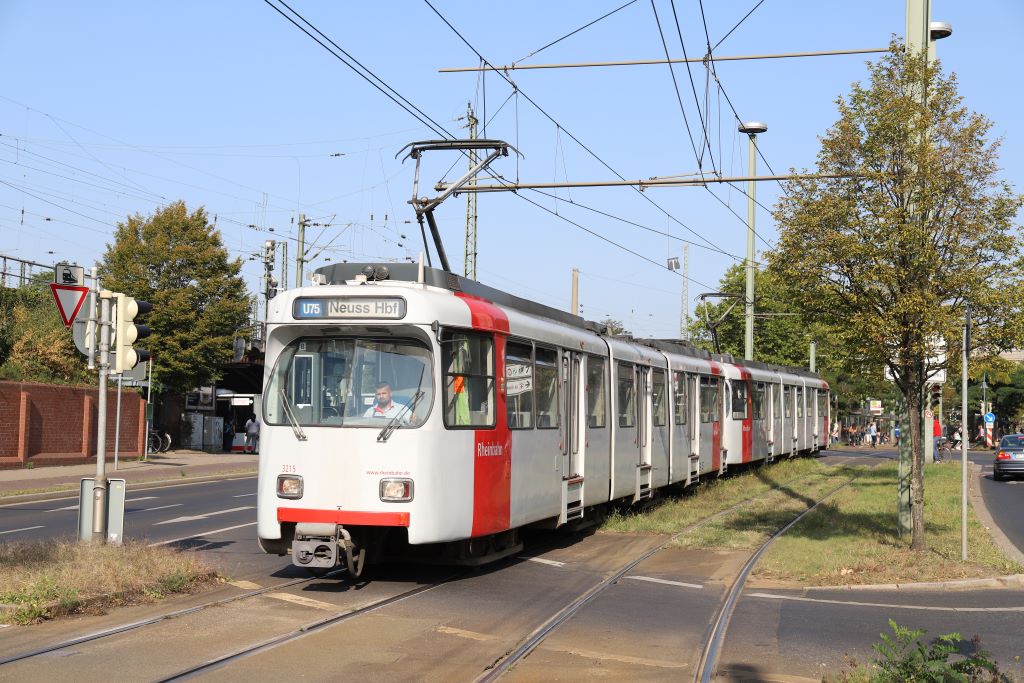
Duisburg
The neighbouring company, connected by a jointly operated light rail line, also has problems with the punctual delivery and commissioning of the new vehicles. This affects both the low-floor vehicles for tram operation and the Avenio HF from Siemens ordered jointly with Düsseldorf.
Of the 18 successors to the high-floor B-carriage, two advance vehicles were due to arrive for testing purposes in autumn 2023, with the series then coming in 2024-2025. In May 2022, the manufacturer had to announce a delay of 16 months for the first two units, while the series is already expected to take 29 months, meaning that they cannot be expected to arrive until 2026 at the earliest.
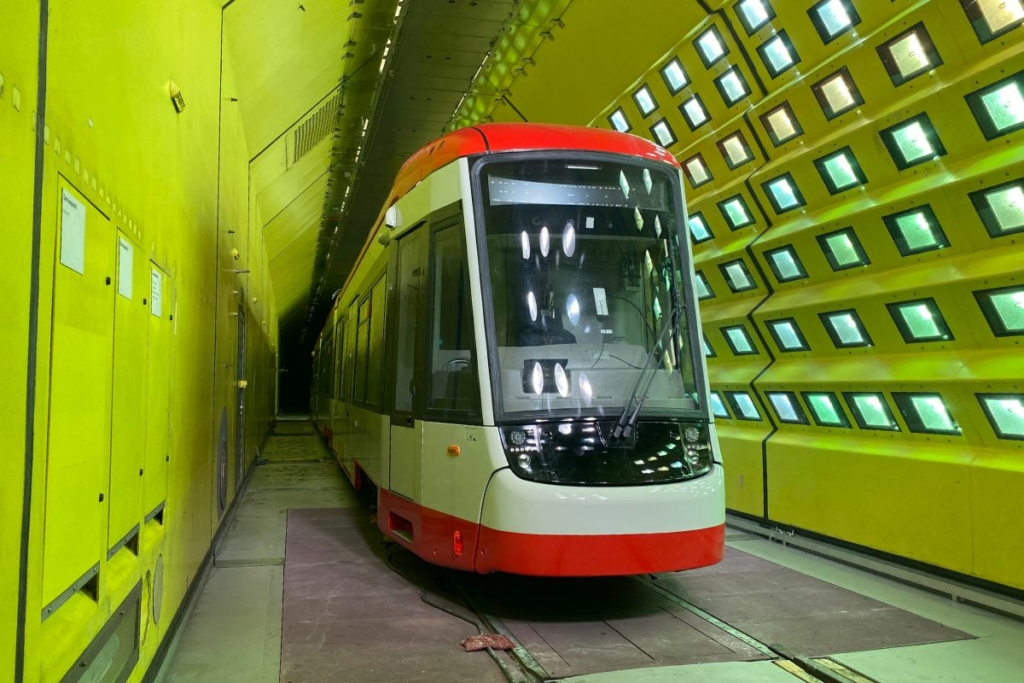
Delivery of the GT8 ND (NF4) low-floor trams, where Bombardier was also the contractor and Alstom the successor, is also progressing slowly. Initially, 2 pre-production trams and 45 series vehicles were ordered, followed by two units as penalty replacements due to late delivery and a further five by exercising an option in October 2023. The first of these arrived in 2017 and only 15 of the 54 trams ordered went into operation in seven years. Even these are not running at full capacity due to a lack of trained drivers. As acceptance is repeatedly refused by the transport company due to production defects at the Bautzen manufacturing plant, delivery is likely to be delayed for some time to come.
Erfurt
The existing option for ten further seven-carriage, 100% low-floor Tramlink vehicles from the manufacturer Stadler Valencia has been honoured in 2023, with delivery scheduled for 2025.
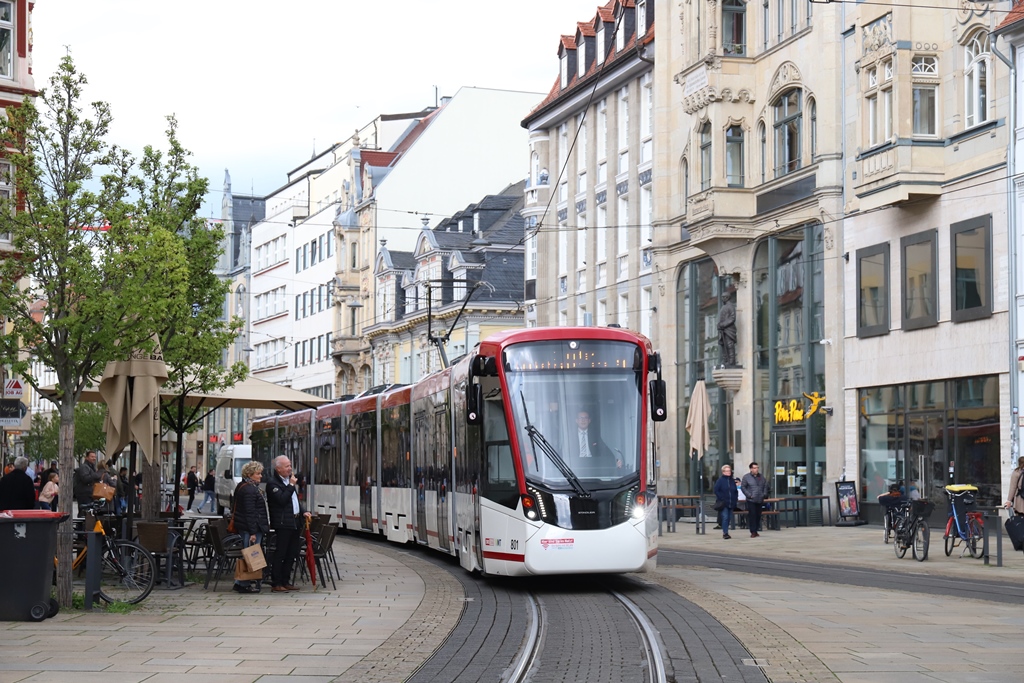
Frankfurt/ Main
There are delays here with both current orders. In September 2018, 22 powered but driverless U5 KR intermediate modules were ordered from Bombardier for the extension of the U5-50 light rail vehicles for delivery from mid-2020. Under the successor Alstom, deliveries began in December 2021 and 16 modules were delivered by the end of 2023. The order was increased by one carriage in 2023 as a penalty replacement. Delivery is due to be completed in 2024.
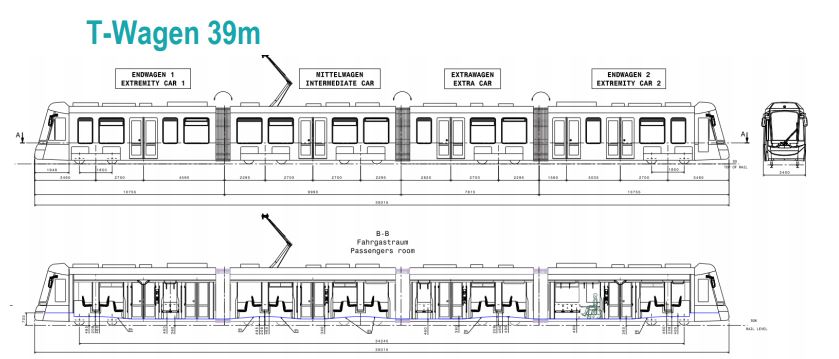
To replace DÜWAG’s first series of low-floor railcars from 1993-97, 38 (+15 options) new vehicles were put out to tender in summer 2017 and ordered in June 2018. The contract was awarded to Alstom Transportation, which was to supply 43 units of a three-car, 100% low-floor, two-directional vehicle known as version X304 (later Cidadis 305) from 2020. The type designation of the transport company is “S”. An option for only ten vehicles remained. Two pre-production trams were to be delivered to the Main in 2020 and the series between 2021 and 2023.
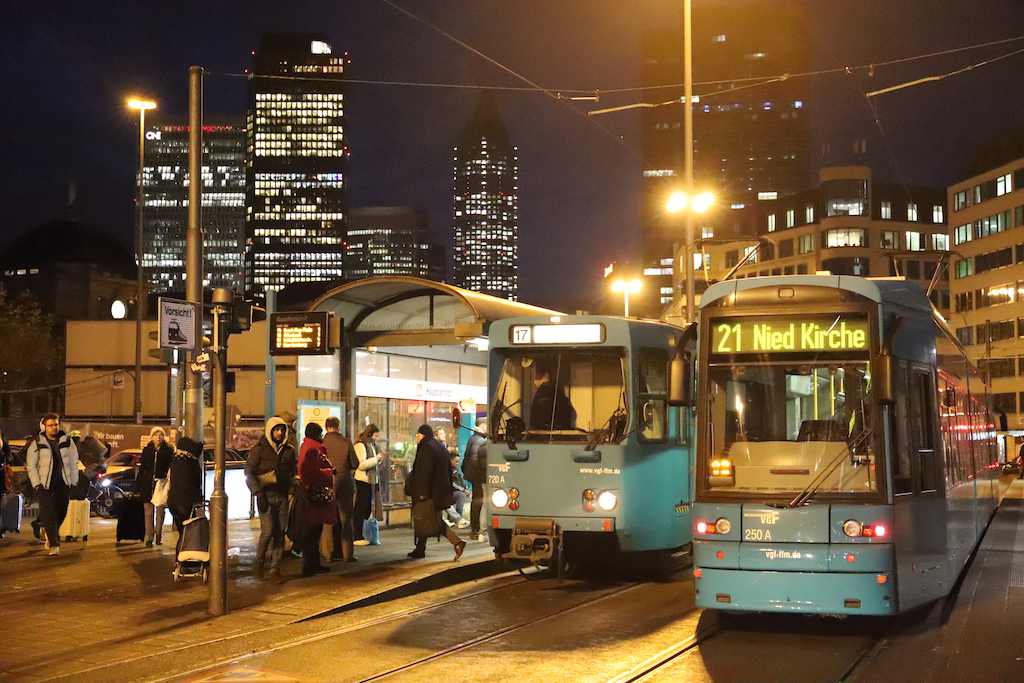
At the beginning of 2020, the order was amended so that 20 of the trams were to receive an additional fourth car section to increase capacity. The extended version was given the version designation X404 (later Citadis 405). The three-car units were to be delivered first from the end of 2020, the extended version from 2022. The two advance coaches were actually delivered at the beginning of December 2022, with the series coaches arriving in Frankfurt from April 2023, but only six of them by the end of 2023. The number of Citadis 405s had already been increased by two to 22 from the options in 2020. In April 2022, the options were honoured with revised figures: twelve units in the form of four-part vehicles and only one car as a three-part vehicle, plus an additional Citadis 305 as compensation for penalties due to late deliveries. A total of 25 three-car and 34 four-car units, i.e. 59 units, will now be built. These should all reach Frankfurt by 2026.
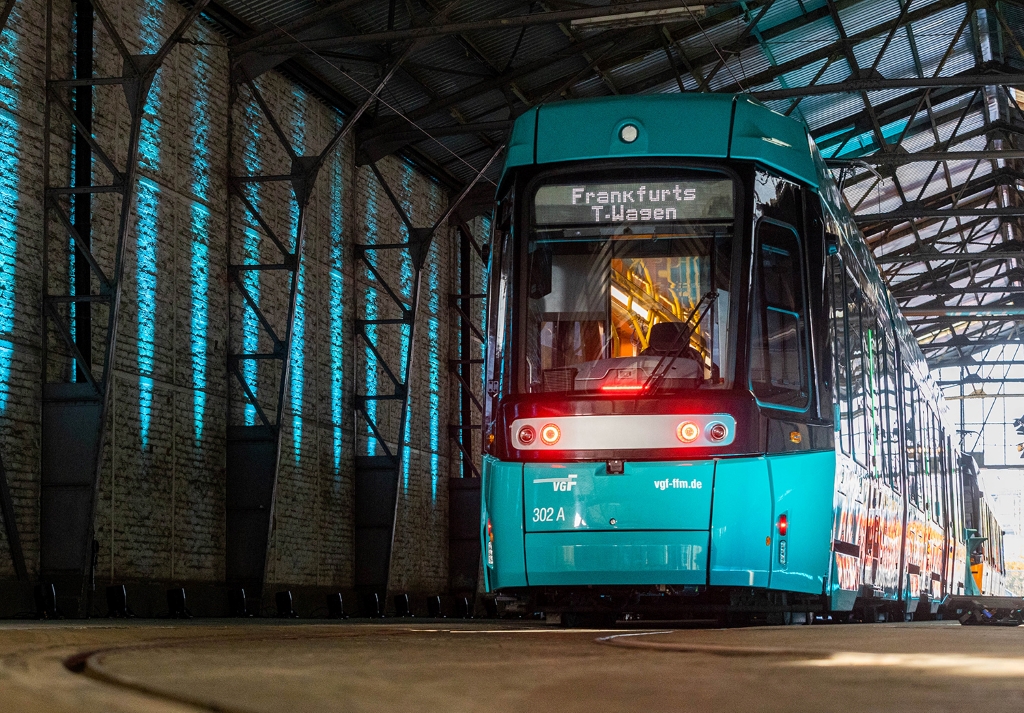
Freiburg
Delivery of the eight Urbos 100s back-ordered from CAF began on schedule in the second half of 2023. Four had been delivered by the end of the year and some had already entered service, with the other four to follow in the first third of 2024. The new vehicles will replace the last two high-floor eight-axle vehicles from 1982 and some of the eleven of this type from 1990-91 equipped with a low-floor centre section.
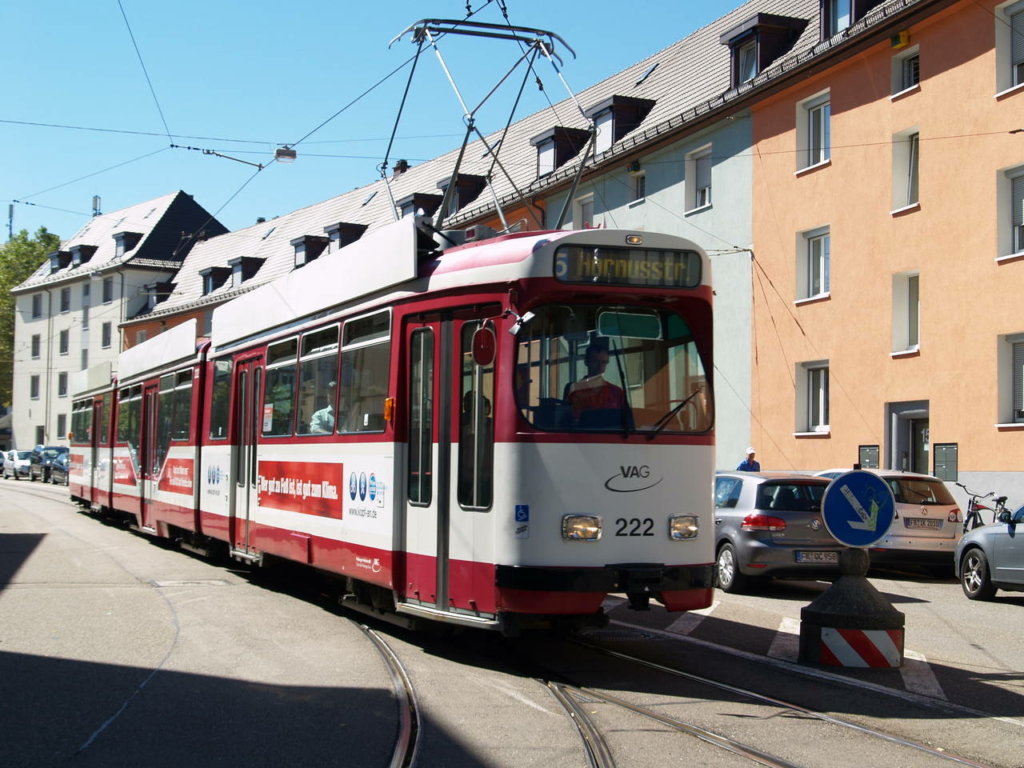
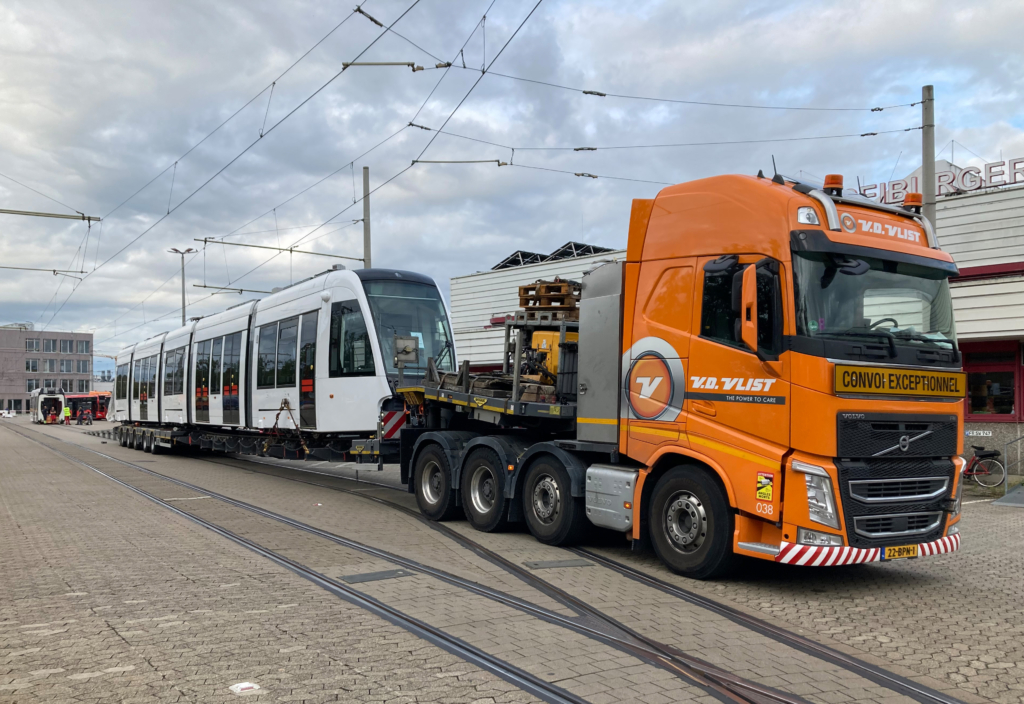
Gera
The procurement of new vehicles planned since the mid-2000s was prevented by politicians for a long time for cost reasons. It was not until February 2023 that a tender for six vehicles with the same number of options was issued. An order was placed in December 2023, with six firm orders and only three options for cost reasons. However, the TINA vehicles ordered from Stadler are now five-part instead of three-part, as originally envisaged in the tender. We reported here.

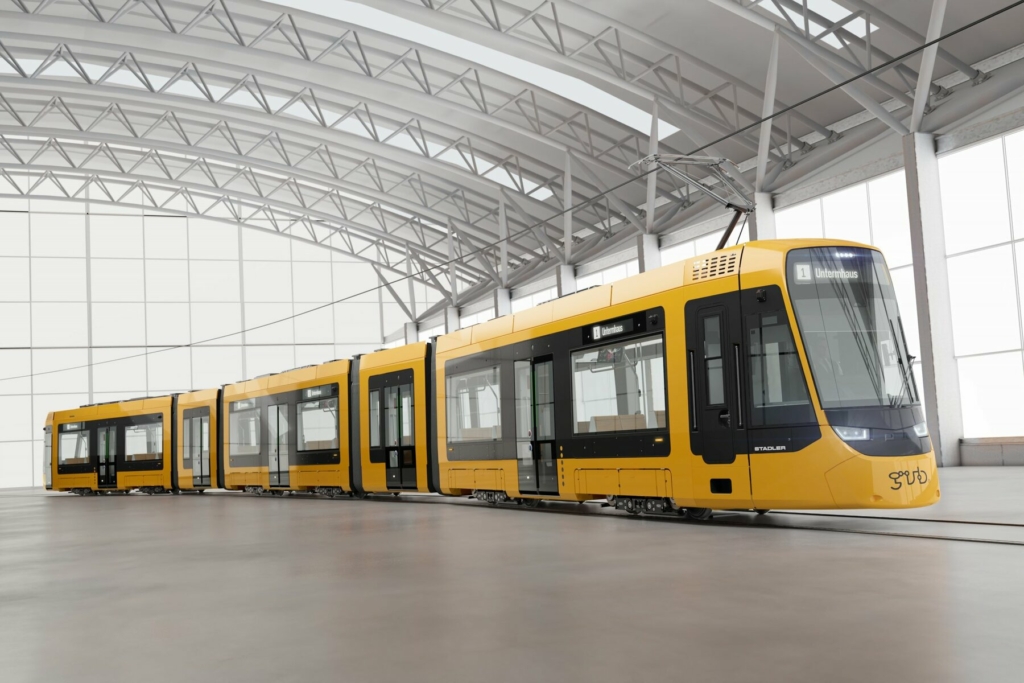
Görlitz/Leipzig/Zwickau
Görlitz is receiving the trams as part of the “Saxon Platform – Tram of the Future” project: Görlitzer Verkehrsbetriebe GmbH (GVB) is procuring the trams as part of a joint order with Leipziger Verkehrsbetriebe and Städtische Verkehrsbetriebe Zwickau. Leipzig will receive 25 cars (+105 option), Zwickau 6 (+12 option) and Görlitz 8 (+6 option) from the manufacturer consortium Heiterblick/Kiepe Electric.

It is interesting to note that at least some of the vehicle carbodies are manufactured locally in Görlitz. The Alstom plant in Görlitz will build a significant proportion of the trams for the cities of Leipzig, Görlitz and Zwickau, which will then be completed and delivered by “Heiterblick”. A contract worth 30 million euros was already awarded to Alstom by Heiterblick in March 2023. Alstom Görlitz will initially manufacture the bodyshells for 25 tram vehicles for Leipzig’s urban transport system. This order is of particular economic significance for Saxony, as the state government wants to promote the preservation of the Alstom site in eastern Saxony and hopes to revitalise the once strong Saxon tram industry. In addition to this order, various companies are working on new tram technologies, including highly automated trams and hydrogen trams. Alstom Saxony has its roots in the former sites of VEB Waggonbau Görlitz and “Deutsche Waggonbau AG” after reunification, which were taken over by Bombardier and then by Alstom.
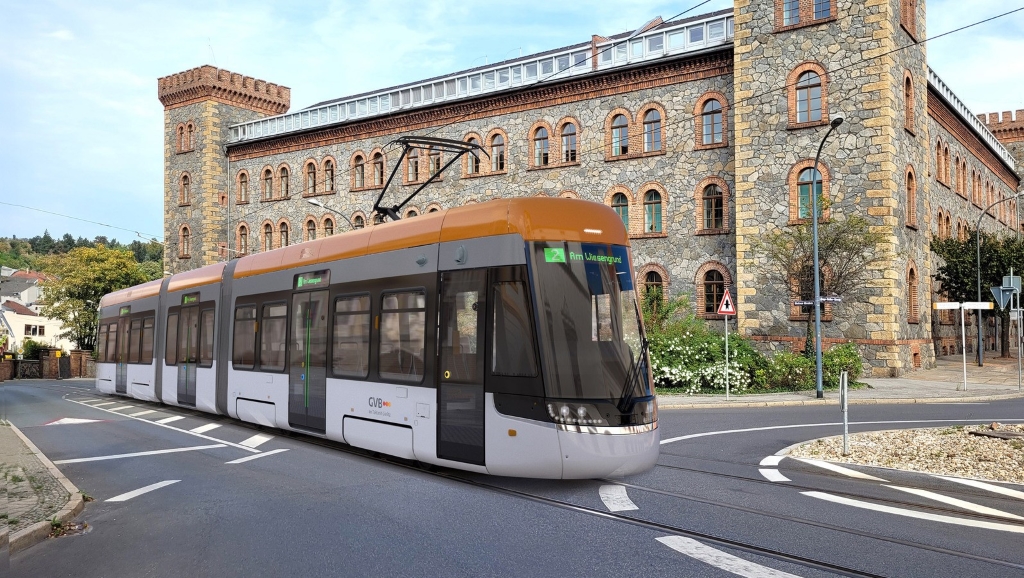
Görlitz will also be in the spotlight as part of another development project. A Saxon consortium involving researchers from Chemnitz University of Technology is planning to realise Europe’s first hydrogen-powered tram in Görlitz by the end of 2026. The project, called HyTraGen, is being led by Hörmann Vehicle Engineering GmbH in Chemnitz and is being funded by the Federal Ministry of Transport with eight million euros. Over the next three years, the TU researchers will develop a refuelling strategy for hydrogen, create simulation models for the ageing of the powertrain and measure the fuel cell system in a laboratory environment. Solutions must be found to compensate for the additional weight of the H2 tank, as the hydrogen trams must not be much heavier than conventional trams. These are intended to offer an alternative to trolley trams and are being trialled in collaboration with partners such as Heiterblick GmbH, Flexiva Automation & Robotik GmbH and Görlitzer Verkehrsbetriebe GVB. According to reports, one vehicle in the new Görlitz tram fleet will be equipped with the fuel cells.
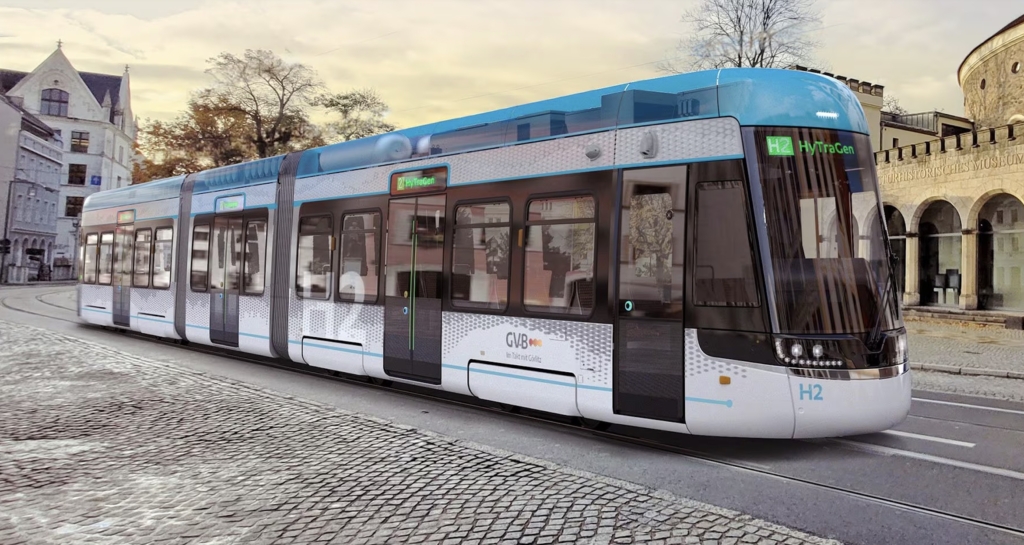
Jena
After the state of Thuringia provided funding for the procurement of new tramcars in September 2019, a corresponding tender was placed. In August 2020, Stadler-Rail was awarded the contract to supply 24 100% bidirectional Tramlink trams, 16 of which are seven-car models (42 m long) and eight of which are five-car models (32 m long). In addition, there are 19 options, five of which are for long tracks. An option for nine 32 metre long trams has now been exercised (delivery 2025 – 26). Delivery of the vehicles, known as the “Lichtbahn”, was scheduled for mid-2023, with the first seven-seater arriving in Jena on time at the beginning of May 2023. Twelve units had been delivered by the end of the year, with the missing four and the eight five-car units arriving in 2024. The first generation of low-floor vehicles, which were procured from 1995 onwards, were sold to Lodz in Poland, where they are gradually being transferred. We reported here.
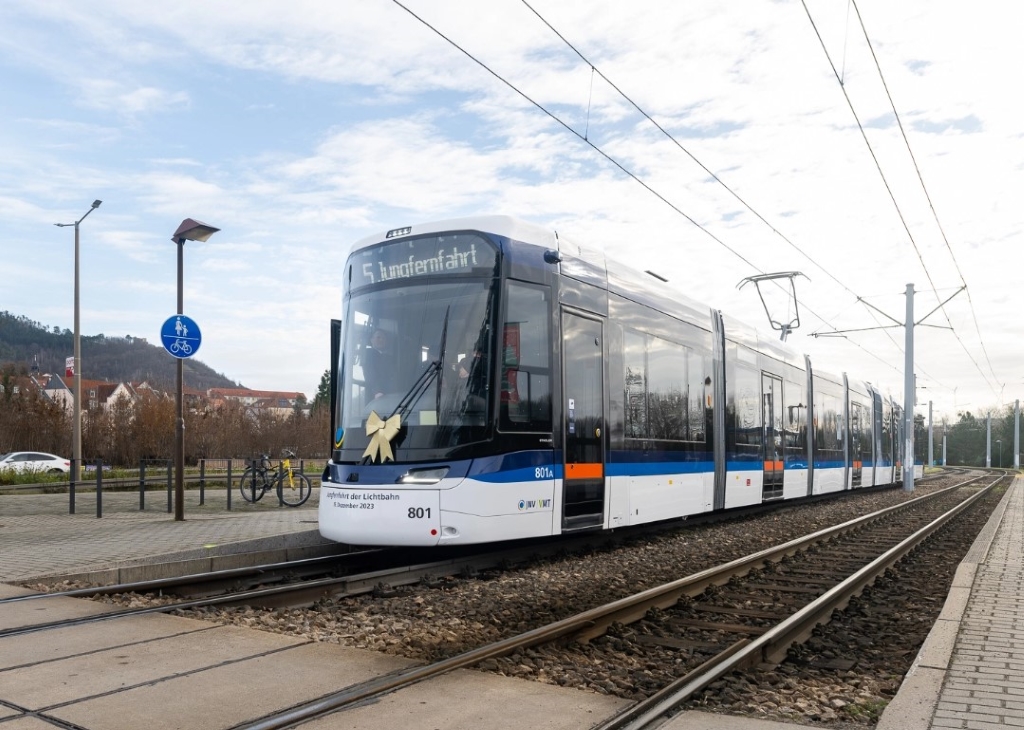
Kassel
In July 2023, the northern Hessian city ordered 22 three-car bi-directional coaches with 70% low-floor content from Skoda Transportation following a tender issued towards the end of 2021. The 30-metre-long trams will be 2.40 metres wide. Two pre-production trams are scheduled for delivery in mid-2026, with series production starting in 2027. There are also two options of eight and ten similar vehicles for delivery in 2028 and 2030. We reported here.
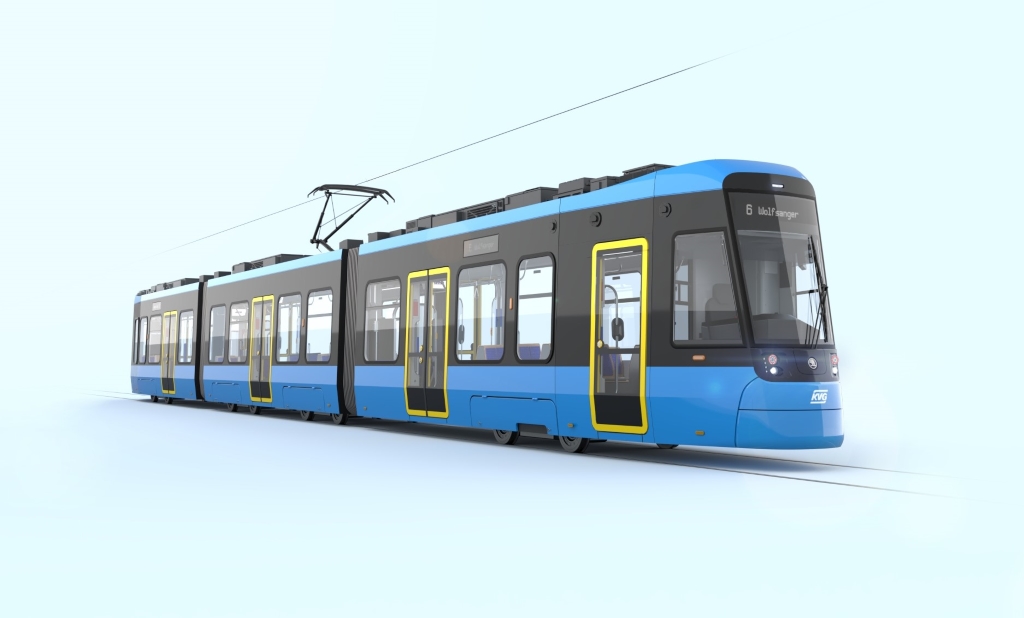
Cologne
Of Cologne’s share of the HF6s ordered jointly with Düsseldorf, which recently grew to 30 units (only 20 were originally ordered), 29 had been delivered by the end of 2023. The first new light rail vehicles arrived in Cologne in December 2020, with passenger service starting twelve months later.
However, there are difficulties with the ordering of new low-floor carriages and the tendering of further high-floor carriages to replace the B light rail vehicles from the 1980s. The NF12 low-floor carriages were ordered in August 2018; each long train consists of two separable halves. Four approximately 30-metre-long train halves were to be delivered for testing in advance in 2022, with the 120 halves of the series then being delivered from 2023. The order also included two short trains with two driver’s cabs, which were also to be available in 2022. Since the beginning of 2021, the planned delivery dates have been pushed back further and further; the manufacturer Alstom is currently assuming a delay of between 29 and 36 months, which will postpone the delivery of the pre-delivery wagons to summer 2025 and the start of delivery of the series to 2026. However, the first series of K4000s from 1995-98 intended for replacement will reach the planned end of their service life earlier, meaning that some of them will have to be upgraded again for longer use. This means that fewer low-floor coaches will be available for passenger services in the short term, which will result in further restrictions to the timetable.
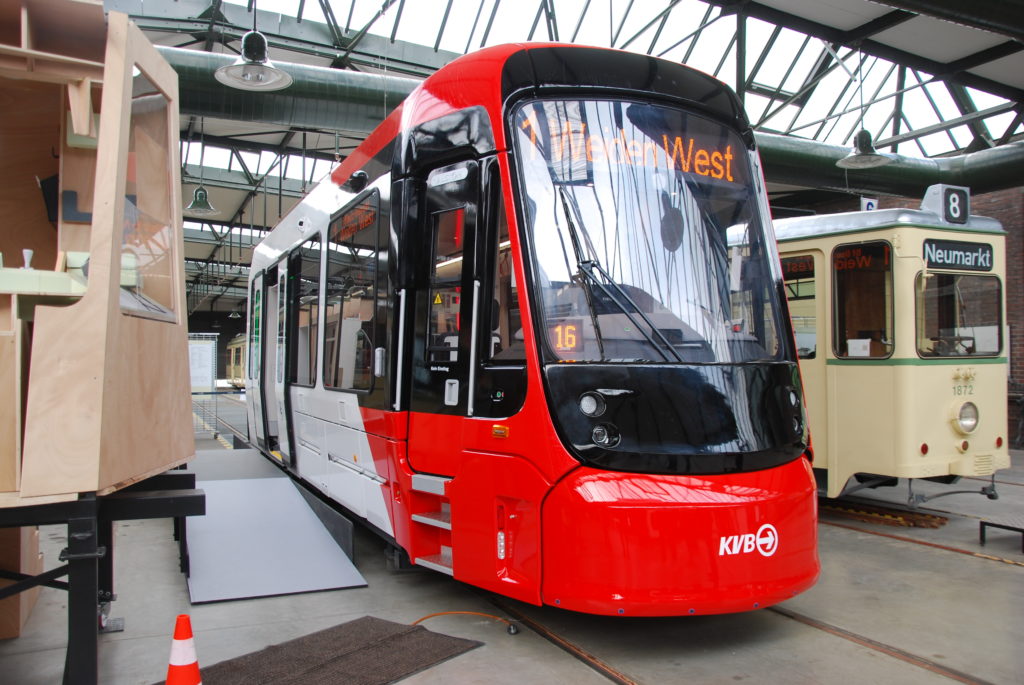
At the beginning of 2019, concrete planning began for new high-floor vehicles of a special design. This was reported on in detail in last year’s compilation. However, the tender launched at the beginning of 2023 did not produce any bids, so it had to be withdrawn. Apparently, the demand for separable half-trains and additional centre sections was too specific and no manufacturer wanted to take the risk associated with new designs in the current situation. However, the need to procure new high-floor coaches remains, as the B coaches procured in 1989-90 will have to be replaced in the second half of the decade in any case.
Magdeburg
The delivery of the 35 four-part 100% low-floor coaches as 38-metre-long setters, which were put out to tender in July 2020 and ordered from Alstom in June 2021 and were originally due to arrive in the city on the Elbe from the 4th quarter of 2023, is now scheduled to begin in the current year.
Mainz
The company announced the planning of a tender for new 70% low-floor wagons in bidirectional design. The plan is to place 22 firm orders and eight options. This will replace the last six high-floor M-type light rail vehicles from 1984 and the first 16 low-floor vehicles delivered in 1996 (100%, single-floor).
The latest development after the editorial deadline: Due to the city’s financial bottlenecks, funds were released for the 22 vehicles put out to tender, but the option for eight vehicles had to be cancelled.
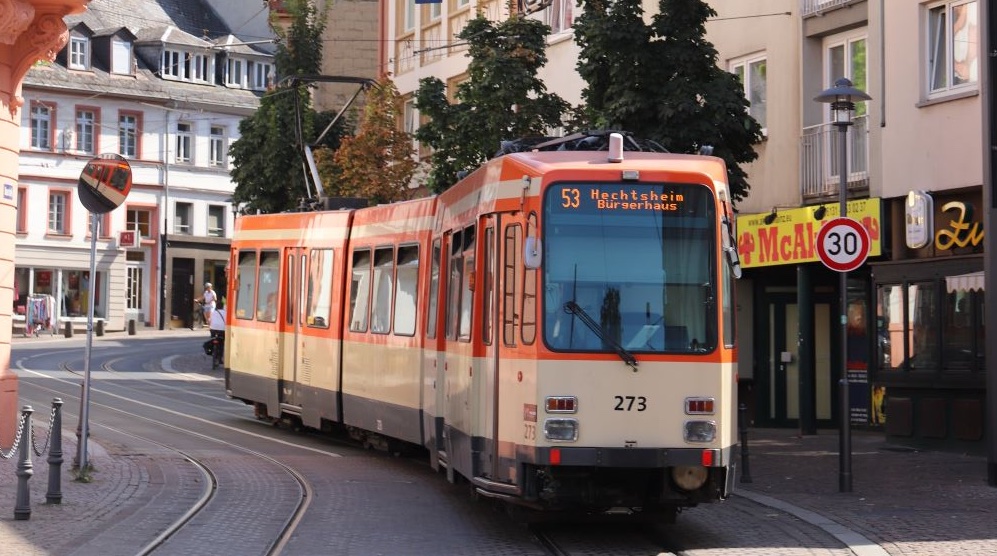
Munich
In 2023, twelve of the ordered large series of 73 four-car Avenio low-floor vehicles from Siemens were delivered. Approval continues to be slow, with only seven of the eleven cars delivered in 2021-22 in passenger service at the end of 2023 and none of the 2023 delivery.
Nuremberg
Delivery of the first series of 12 100% low-floor coaches of the four-car Avenio type built for Munich was completed at the beginning of 2023. In 2021, the first and second options for ten and four Tw were converted into a firm order, the first four of which were delivered in 2023. The remaining ones will follow in 2024. The company has increased vehicle requirements due to the introduction of two new lines.
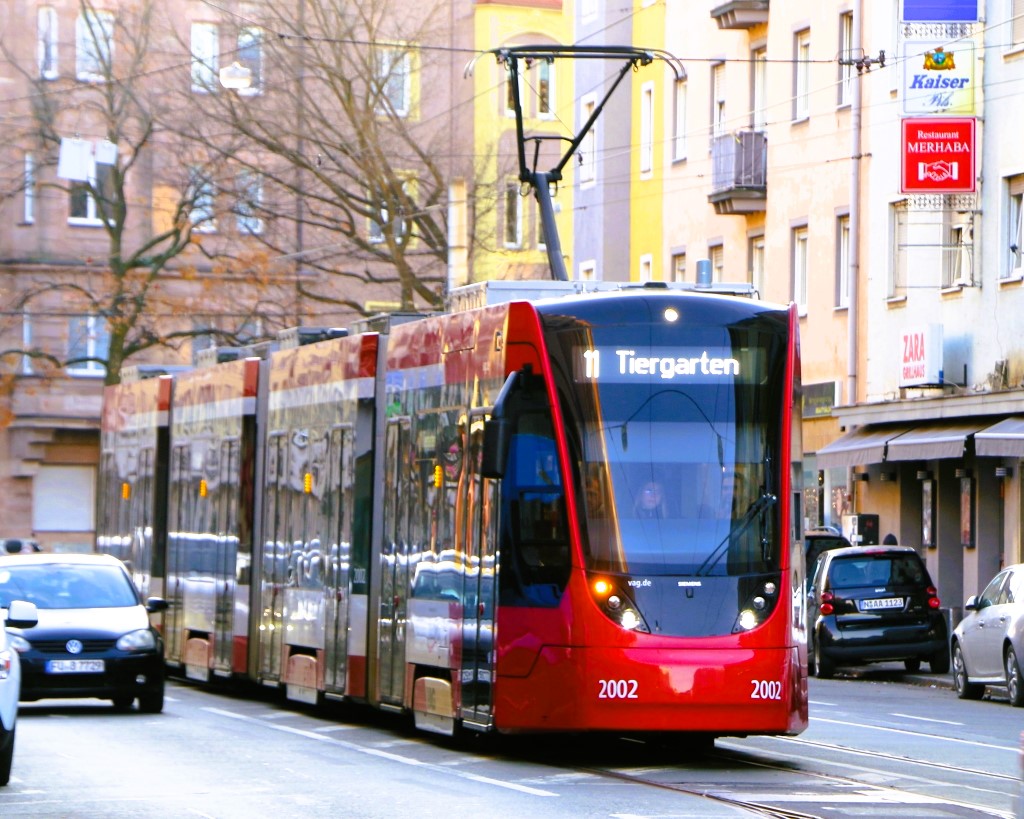
Potsdam
The ten ordered 100% low-floor Tramlink trams (manufacturer Stadler Valencia) are to be delivered from the second half of 2024. In the meantime, three more vehicles have been ordered from the existing option of 15 additional vehicles.
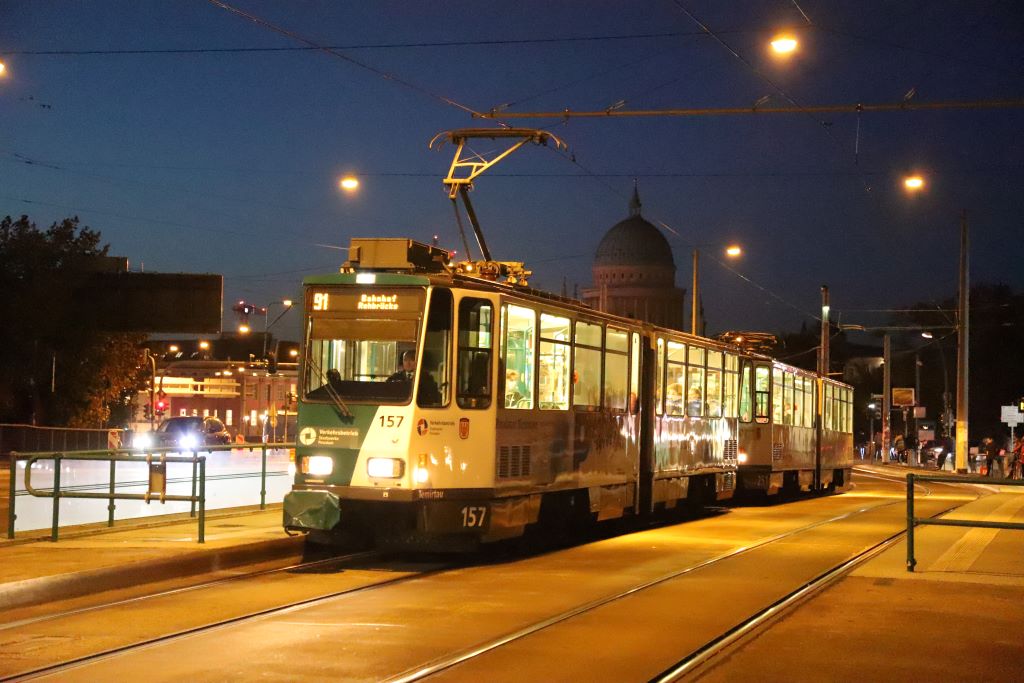
Rhein-Neckar-Verkehr (rnv) (Heidelberg, Ludwigshafen, Mannheim, former OEG)
Of the three-car Skoda type 36 T variant, 31 units have been ordered, only nine had been delivered by the end of 2023. They were put into passenger service in time for the start of the Federal Horticultural Show in mid-April. At the end of June, the first half train to form the four-car 37 T train arrived at its future destination. By the end of 2023, there were ten halves of the train, two of which are always permanently connected to each other as a unit. Each of the two train sections has its own number. This version has also been in passenger service since January 2024. The order is for 64 train halves. If the current delivery cycle of one unit per month is maintained, the delivery of both variants will take some time. Once the financing has been secured, two options for a total of 34 units will be executed shortly.
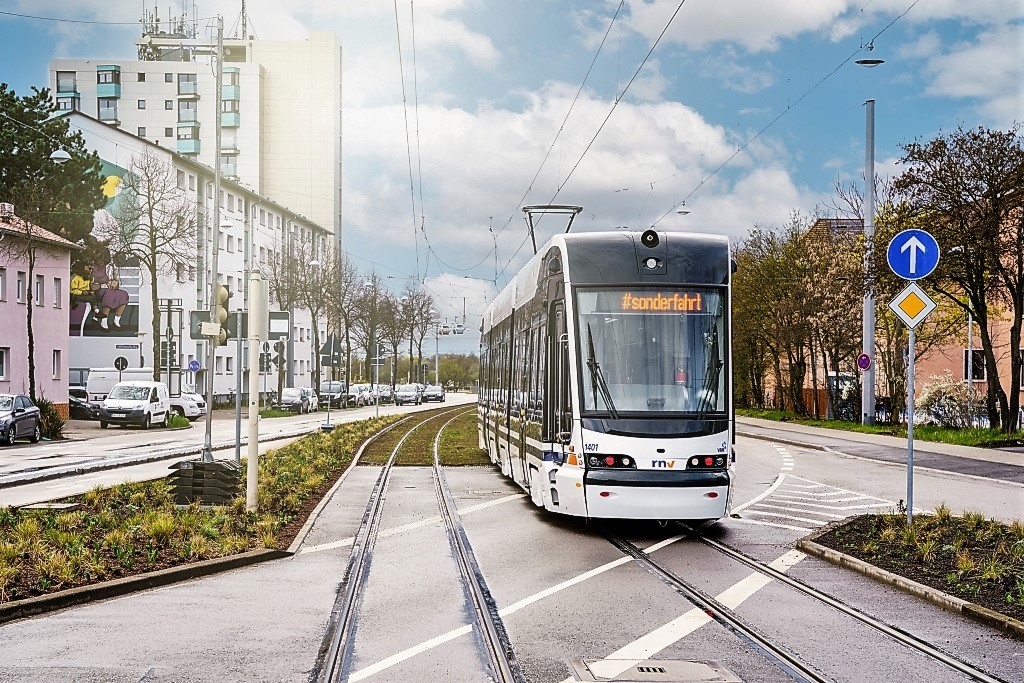
Ruhrbahn (Essen/Mülheim)
Delivery of the NF4 low-floor trams for metre-gauge tram operation in Essen is on schedule. At the end of 2023, 19 units were in operation. The existing option for six vehicles was honoured in January 2024, meaning that a total of 32 NFs will be delivered. For contractual reasons, the option vehicles will be delivered first before the remaining vehicles from the original order follow in 2024.
The NF4s will largely replace the remaining M8C high-floor vehicles. The last line in the south of Essen that is not suitable for low-floor vehicles, which is also used in part by the standard-gauge light rail system, has been made suitable for low-floor vehicles by 2023, meaning that the metre-gauge high-floor vehicles will no longer be needed.
In the meantime, Ruhrbahn is making preparations to replace the first series of low-floor NF1 carriages from 1999 – 2001 from the end of the 2020s. These will be longer than the existing vehicles, but this will entail considerable adjustments to the infrastructure.
The first new HF1 light rail vehicle for the standard-gauge network was in the completion stage at the end of 2023 at the Zaragoza plant of Spanish manufacturer CAF and is therefore scheduled to arrive in Essen largely on time as a pre-delivery together with a second tram for testing in summer 2024. The 49 series vehicles, 16 of which have only one driver’s cab and can therefore only be used in pairs, will then replace the type B light rail vehicles and the types P86 and P89 purchased second-hand from London’s Docklands Rail from 2025. The oldest B-cars will be 50 years old in 2026!
Woltersdorf
The first of the three four-axle coaches ordered for bidirectional operation in 100% low-floor design completed test runs at the manufacturer Modertrans in Poznan, Poland, in February 2024. It arrived at Woltersdorf in late March. The existing option for a fourth wagon was honoured in December 2023 after the financing was clarified.

Würzburg
The delivery problems there were already reported on last year. According to the manufacturer, delivery of the 18 five-part furnishing carriages ordered is scheduled to begin in summer 2024 and take a year and a half until the beginning of 2026. Due to the steep gradients to be travelled on the network, the new vehicles are also equipped with all-axle drive. The first use in passenger service is not expected until the first half of 2025 at the earliest. While DÜWAG’s high-floor articulated trams, some of which are over 50 years old, have been in increased and all-day use since the timetable was shortened in September 2023, damage to one of the 20 only partially low-floor articulated trams delivered in 1996 for the new and steep route to Heuchelhof caused restrictions from the beginning of November 2023. The series was completely taken out of service at the beginning of November to determine the cause of the damage and possible occurrence on the other units as well. Material fatigue is now considered to be the cause. If the new buildings had been delivered on time, they would have offered a replacement, but now they are too late. Costly repairs to the 1996 trams are therefore necessary to make them operational again for a limited period of time.
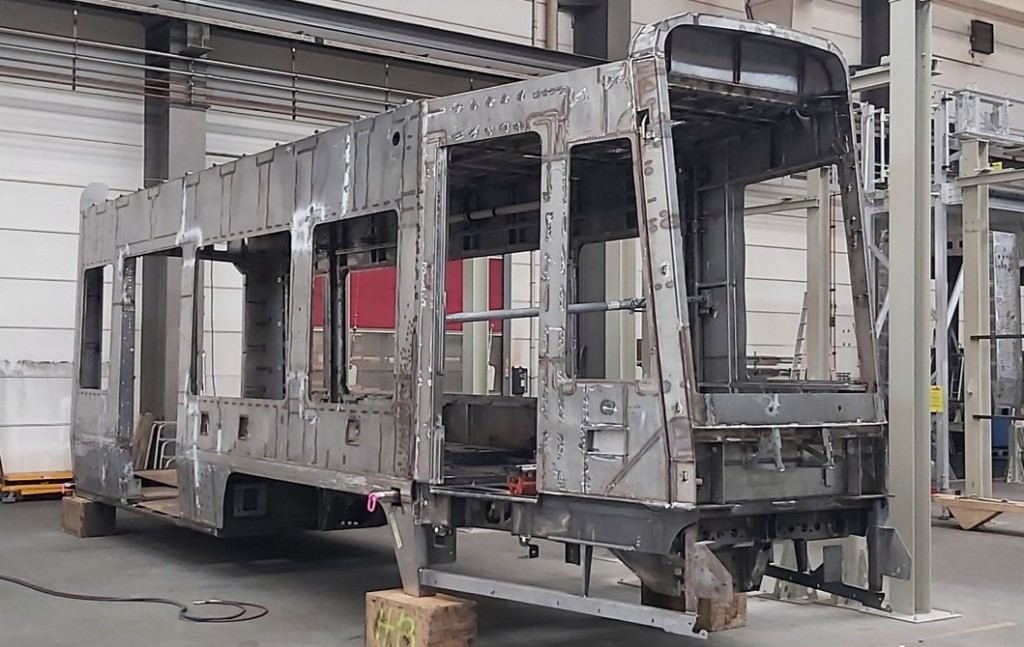
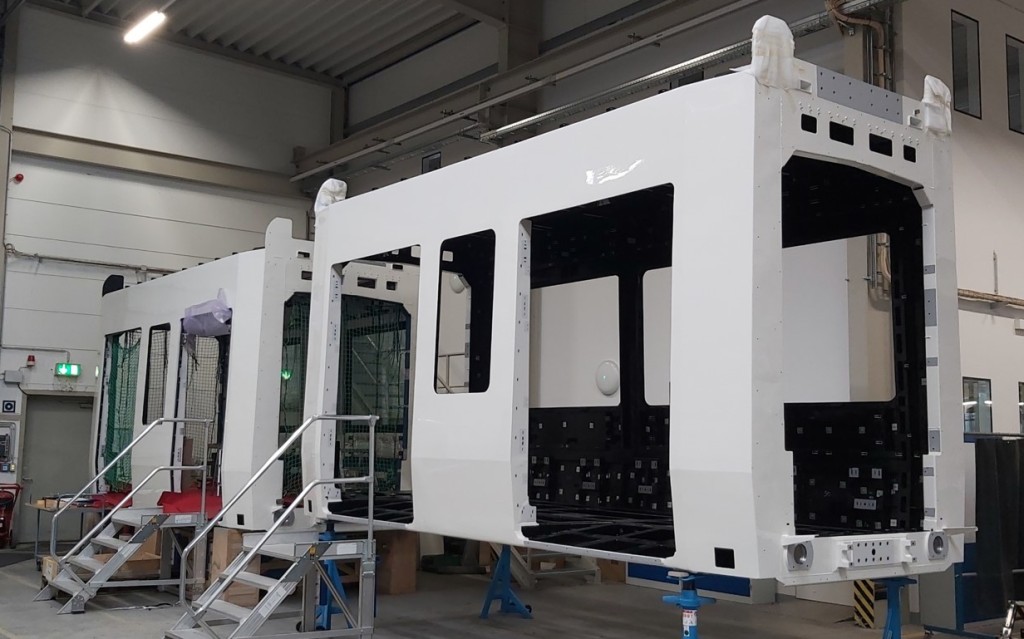
While the vehicle breakdown is unpleasant for the daily passengers – the replacement buses are overcrowded and the old Düwag trams are not low-floor vehicles – tram fans enjoy the daily use of the Düwag eight-axle vehicles, which are called GT-D in Würzburg. The local TV-channel Bayerischer Rundfunk even published a report on this occasion (in German):
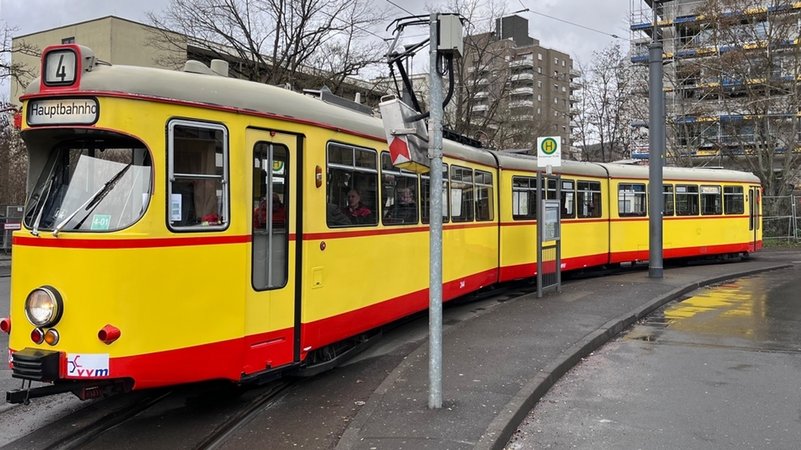
The previous reports can be found here:
Table 1: Vehicles on order or in production
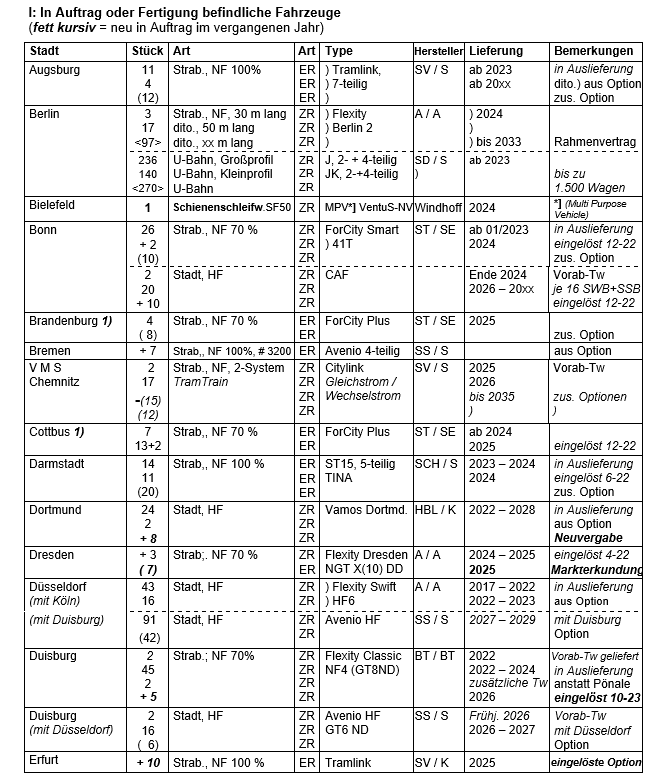
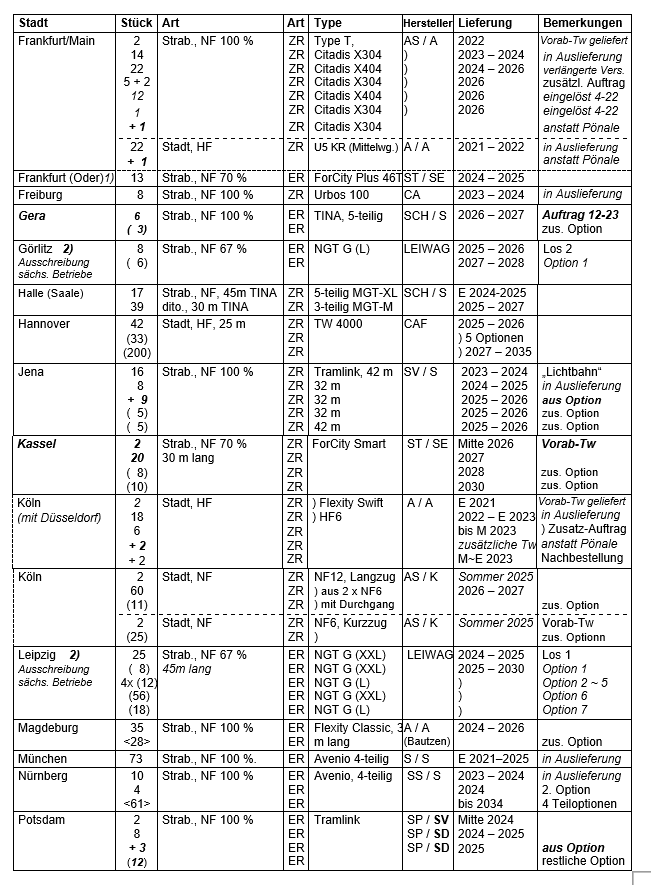
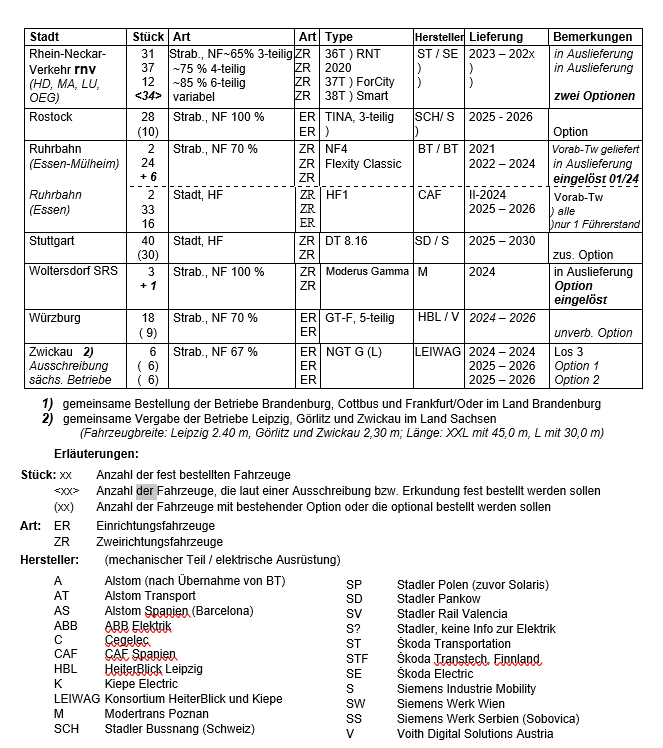
Table 2: Tendered orders or vehicles or planned tenders
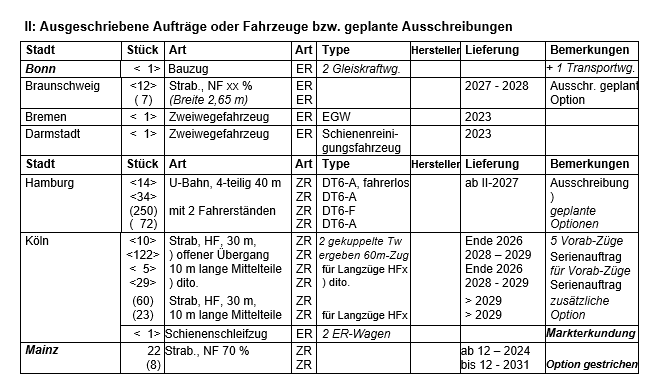
Table 3: VDV TramTrains, order from January 2022
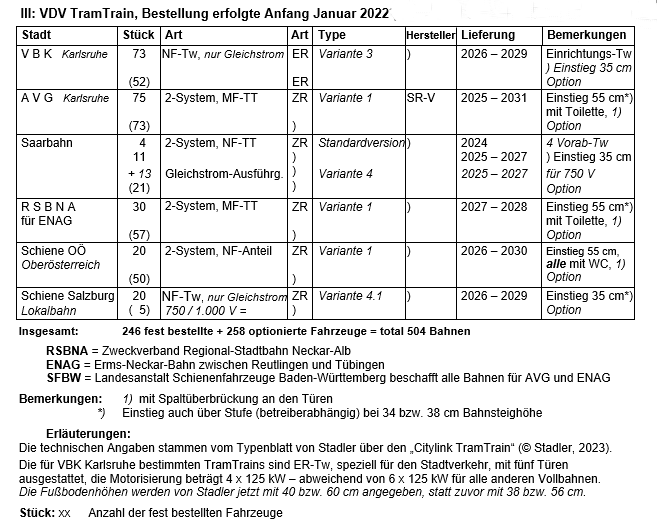
Legend:
- Number of vehicles: xx = Number of ordered vehicles, <xx> = Number of vehicles which have been tendered, (xx) = Optional vehicles;
- Type: vehicle type as used by the respective operators;
- Manufacturers (mechanical part/ electrical part): ABB: ABB Switzerland, AT: Alstom Transport, BT: Bombardier Transportation, C: Cegelec, CA: CAF Spain, HBL: HeiterBlick Leipzig, K: Kiepe Electric, SO: Solaris Tram (now: 100 % Stadler), SP: Stadler Pankow, SS: Stadler Switzerland, SU: Stadler Hungary, SV: Stadler Rail Valencia, ST: Škoda Transportation, STF: Škoda Transtech, Finland, SE: Škoda Elektra, S: Siemens Mobility, V: Voith Digital Solutions Austria
Comments to the TramTrain (VDV) order:
Standard version: three-section, eight-axle 37 m long ZR-Tw (Do-traction = 75 m), three drive bogies (Bo’Bo’2’Bo), air-conditioning of passenger compartment and driver’s compartments, step-less entry at 36 cm.
- Variant 1: three-section, eight-axle 37 m long ZR-Tw (Do-traction = 75 m), air-conditioning of passenger and driver compartments, toilet in the middle section, step-free entry at 56 cm (further entry via step [depending on operator] at 34 cm or 38 cm)
- Variant 3: three-section, eight-axle 37 m long ER-Tw, 750 V DC, two drive bogies, five doors with entry height 34 cm, air conditioning in passenger and driver compartments, toilet in the middle section, toilet in the driver compartments driver’s compartments
- Variant 4: three-section, eight-axle 37 m long ZR-Tw, 750 V DC, air-conditioning in passenger and driver compartments, boarding height 36 cm
- Variant 4.1: three-section, eight-axle 37 m long ZR-Tw, 750 ~ 1,000 V DC, air-conditioning in passenger and driver compartments, access at 38 cm
- RSBNA Neckar-Alb regional light rail project company
- ENAG Erms-Neckar-Bahn between Reutlingen and Tübingen (replaced by RSBNA)
- SFBW Schienenfahrzeuggesellschaft Baden-Württemberg procures all trains for AVG and RSBNA

